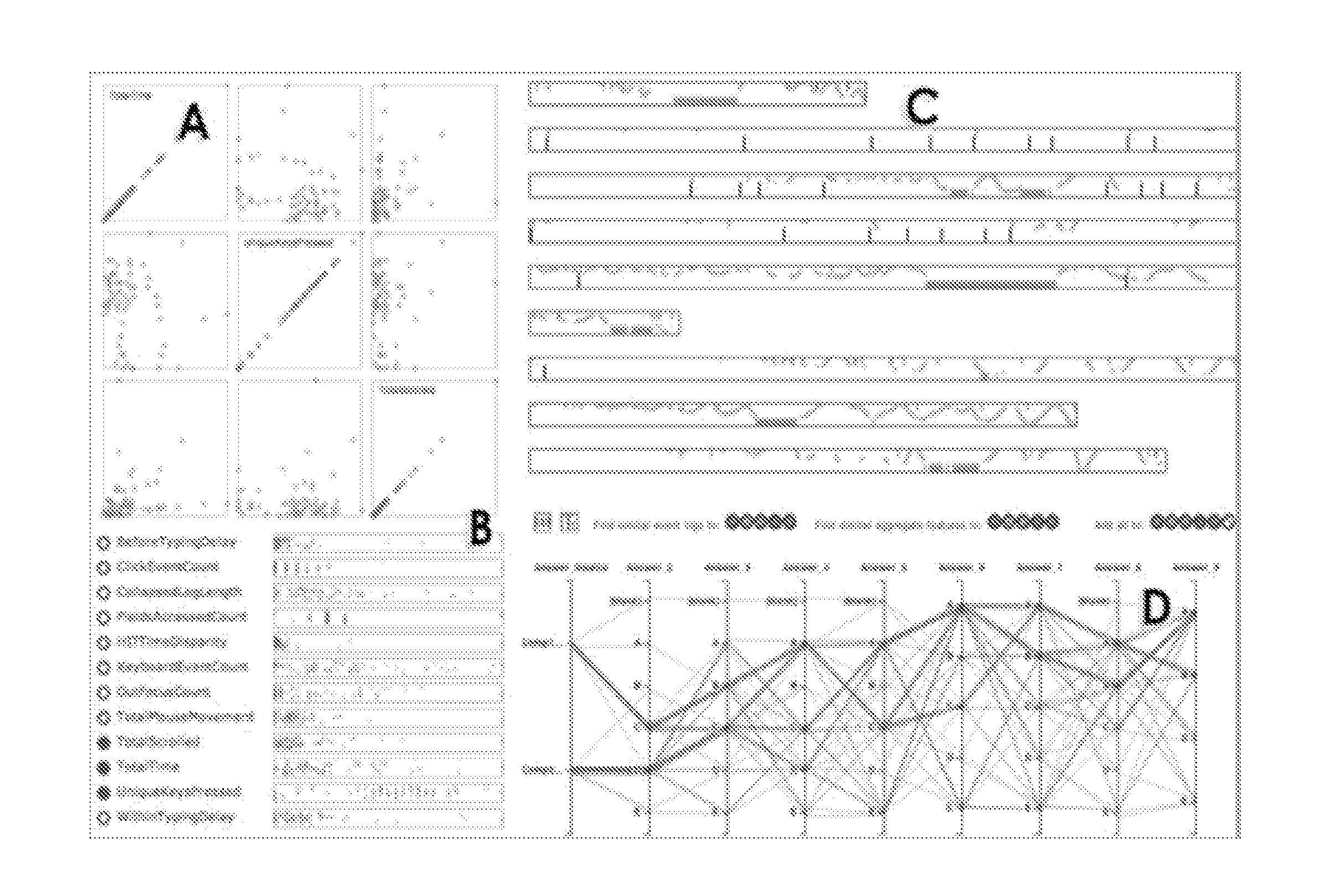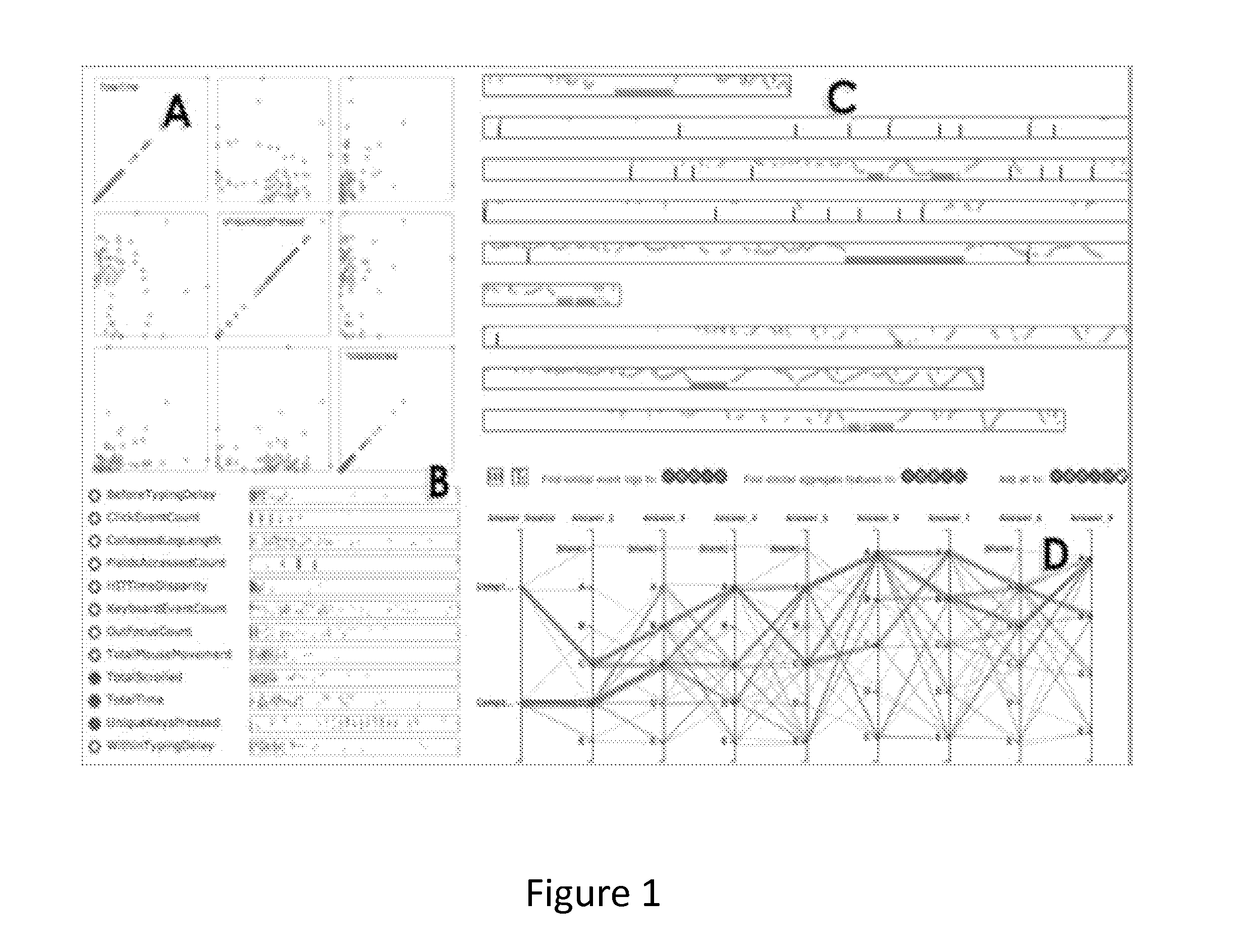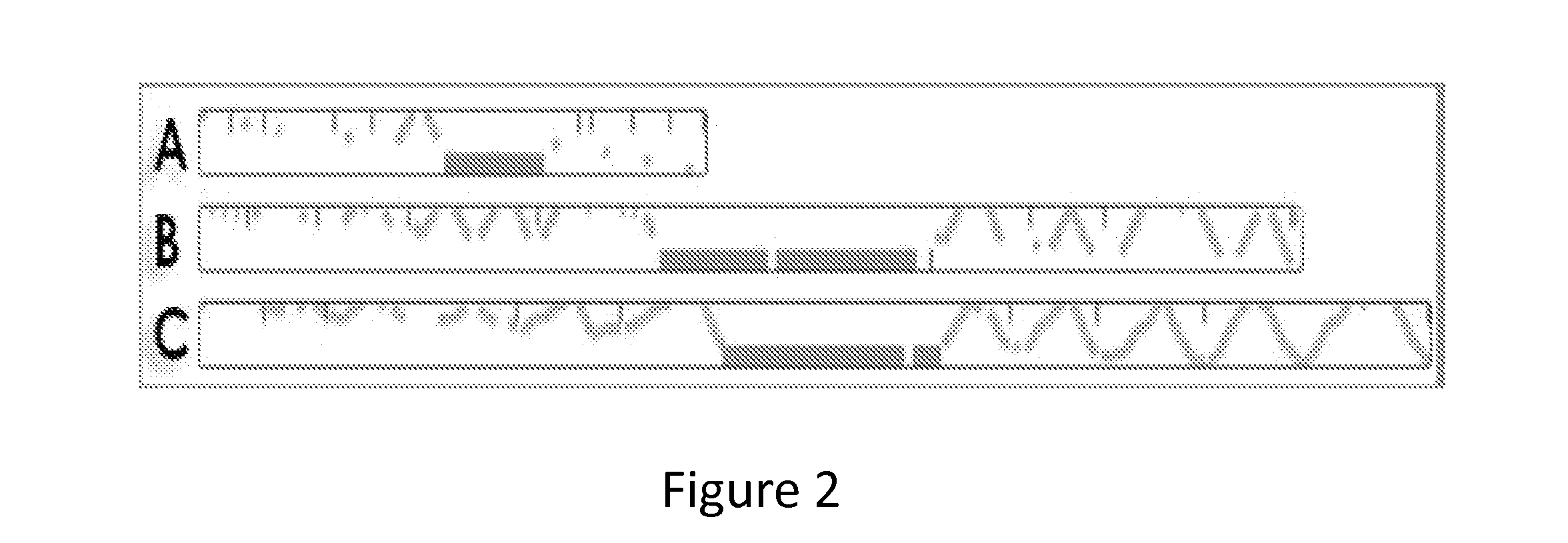System for Interactively Visualizing and Evaluating User Behavior and Output
a user behavior and output technology, applied in the field of interactive visualizing and evaluating user behavior and output, can solve the problems of not being able to accurately determine on its own which work to accept or reject, affecting the quality of distributed work, and presenting significant quality control challenges
- Summary
- Abstract
- Description
- Claims
- Application Information
AI Technical Summary
Problems solved by technology
Method used
Image
Examples
Embodiment Construction
[0025]The present invention, having a user interface as illustrated in FIG. 1, is built on an online crowdsourcing market, for example, Mechanical Turk (Mturk), capturing data from both the MTurk API to obtain the output of work done on the market and a task fingerprinting system to capture worker behavioral traces, which are recorded to a data store, preferably a database. In a preferred embodiment, the present invention uses these two data sources to generate an interactive data visualization which is powered by Javascript, JQuery, and D3.js.
[0026]As an example of the use of the present invention, a requester has two hundred workers write short synopses of a collection of YouTube physics tutorials so that the best ones can be picked for use as video descriptions. The system of the present invention can be used to parse through the pool of submissions. To collect the worker behavioral traces, code was added to the crowdsourcing market interface to log worker behavior using user int...
PUM
 Login to View More
Login to View More Abstract
Description
Claims
Application Information
 Login to View More
Login to View More - R&D
- Intellectual Property
- Life Sciences
- Materials
- Tech Scout
- Unparalleled Data Quality
- Higher Quality Content
- 60% Fewer Hallucinations
Browse by: Latest US Patents, China's latest patents, Technical Efficacy Thesaurus, Application Domain, Technology Topic, Popular Technical Reports.
© 2025 PatSnap. All rights reserved.Legal|Privacy policy|Modern Slavery Act Transparency Statement|Sitemap|About US| Contact US: help@patsnap.com



